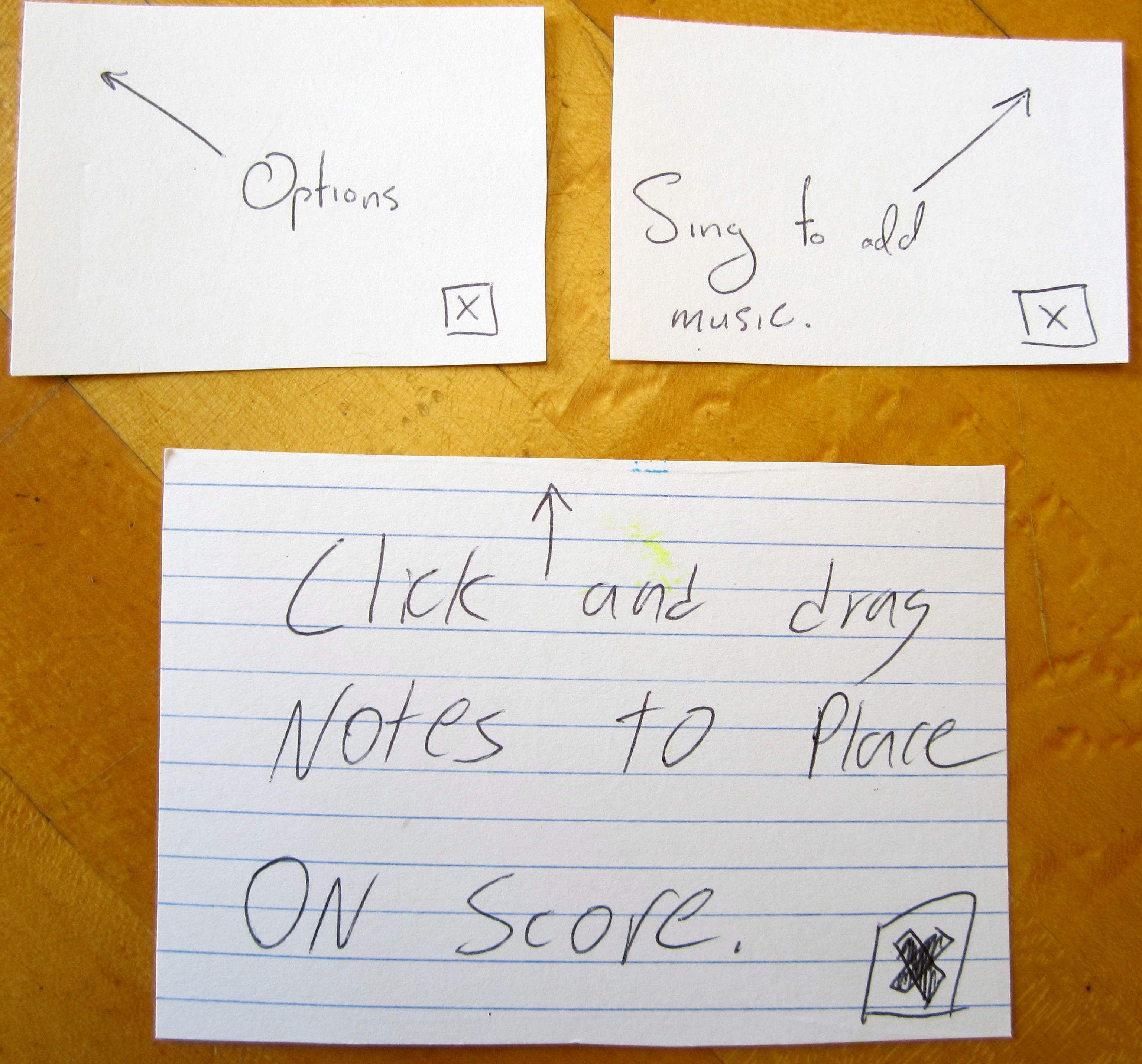Prototype Photos
Main Screen. After our splash screen is displayed, the user sees this screen. They can create a new sketch, or browse their old sketches. The options menu shown at the bottom can be accessed by clicking the phone's menu button.
Settings Screen. The user is presented with this settings screen after they click the Create New Sketch button. This lets them customize their sketch.
Edit Mode. The initial values of this screen are pre-populated based on the selections from the Settings screen. The user drags the notes from the top bar onto the staff to place them. When placed, the program plays the pitch. The user can drag the note up or down to adjust its pitch and placement on the staff. The measure bars are added automatically. The V next to the notes shows a dropdown menu with more notes. The least recently used note is then replaced with the new choice. The Rests button toggles between showing the notes and the rests of similar value. The Record button brings up the phone's record interface and the user can sing into the phone, which then places notes on the staff.
The buttons at the bottom are similarly used by dragging them to notes to modify the sketch. If the user clicks the mp it brings up a Dynamics menu and the user can select a new value to drag onto the staff.
The Options box pops up the first time the user ever creates a new sketch. The other boxes pop up the first time the user clicks on the notes or the record button.
These different option menus are brought up when the user clicks corresponding parts of the staff (the clef, time signature, tempo marking (not shown), expressive marking (not shown), and key signature).
This shot shows the Options menu, accessed by clicking the phone's option button. Undo reverses the last action. Save saves the sketch (the name was specified on the Settings screen before the sketch was created), and then tells the user that it has been saved. Close takes the user back to the main screen. Play switches into Playback mode.
Playback Mode. Pressing the Play arrow changes it to a Pause symbol and plays the sketch. A cursor shows the user where it is playing. Pressing << or >> moves the cursor one note in the specified direction and plays that note, so the user can step through the piece.
The options menu for playback mode. Edit moves the user back into Edit Mode. Close takes the user back to the main screen. We added Save because we found that users wanted to be able to save their sketches from this mode, despite the fact that they cannot actually edit the sketch from this mode.
Briefing
You are a music student. You have music in your head that you want to write down, but you do not have your computer or a pen and paper. You do have your Android phone. You open up our app and see this screen. (First screen in placed in front of the user.)
Scenario Tasks
- Create a new piece of music
- Browse through your files to find the one you just created
- Listen to your sketch
Observations
Initial usability problems:
- Users didn't know to "drag-and-drop". Many thought that the note selection was moded.
- There was no option for a dot on a note.
- "Speak" when recording audio was not a clear word. Many users tried to say "cee" instead of singing it.
We have also included a public document that lists the raw observations and iterative design changes that we made as we went through each user test.
https://docs.google.com/document/d/19hrRuZWynYfpp41_lAAxiRQtrpMXEUebG4TXOI5Crow/edit







